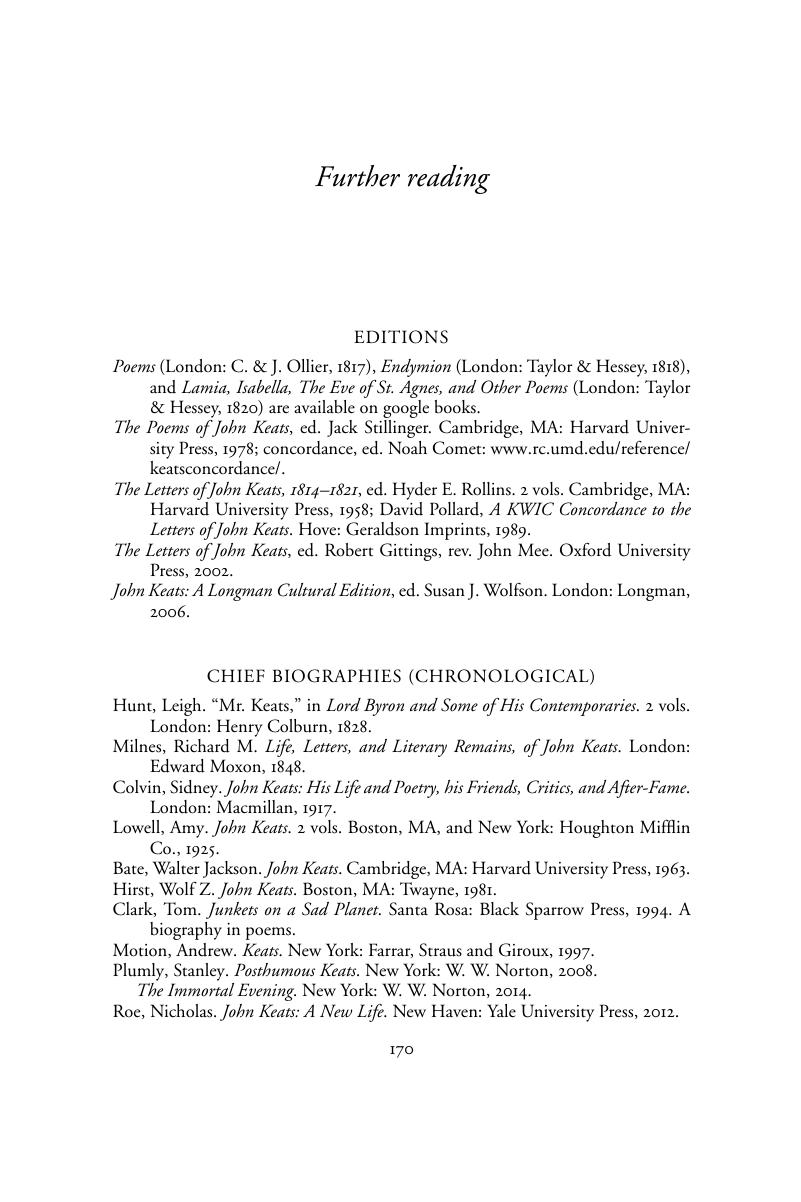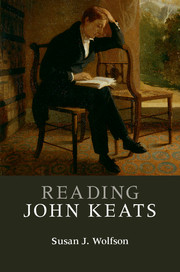Book contents
- Frontmatter
- Dedication
- Contents
- List of figures
- Preface
- Acknowledgments
- Note on the texts
- List of abbreviations
- 1 Life and times
- 2 Conceiving early poems, and Poems
- 3 Falling in and out of love with Endymion: A Poetic Romance; rereading King Lear
- 4 Venturing “new Romance”: Isabella; or, The Pot of Basil. A STORY FROM BOCCACCIO
- 5 Falling with Hyperion
- 6 Still Romancing: The Eve of St. Agnes; a dream-sonnet; Labelle dame
- 7 Reforming the sonnet and forming the Odes of spring 1819: Psyche; Nightingale; Grecian Urn; Melancholy; Indolence
- 8 Writhing, wreathing, writing Lamia
- 9 Falling in Fall 1819: The Fall of Hyperion and To Autumn
- 10 Late poems & lasting Keats
- A few famous formulations
- At a glance: Keats in context
- Notes
- Further reading
- Index
- References
Further reading
Published online by Cambridge University Press: 05 June 2015
- Frontmatter
- Dedication
- Contents
- List of figures
- Preface
- Acknowledgments
- Note on the texts
- List of abbreviations
- 1 Life and times
- 2 Conceiving early poems, and Poems
- 3 Falling in and out of love with Endymion: A Poetic Romance; rereading King Lear
- 4 Venturing “new Romance”: Isabella; or, The Pot of Basil. A STORY FROM BOCCACCIO
- 5 Falling with Hyperion
- 6 Still Romancing: The Eve of St. Agnes; a dream-sonnet; Labelle dame
- 7 Reforming the sonnet and forming the Odes of spring 1819: Psyche; Nightingale; Grecian Urn; Melancholy; Indolence
- 8 Writhing, wreathing, writing Lamia
- 9 Falling in Fall 1819: The Fall of Hyperion and To Autumn
- 10 Late poems & lasting Keats
- A few famous formulations
- At a glance: Keats in context
- Notes
- Further reading
- Index
- References
Summary

- Type
- Chapter
- Information
- Reading John Keats , pp. 170 - 174Publisher: Cambridge University PressPrint publication year: 2015



